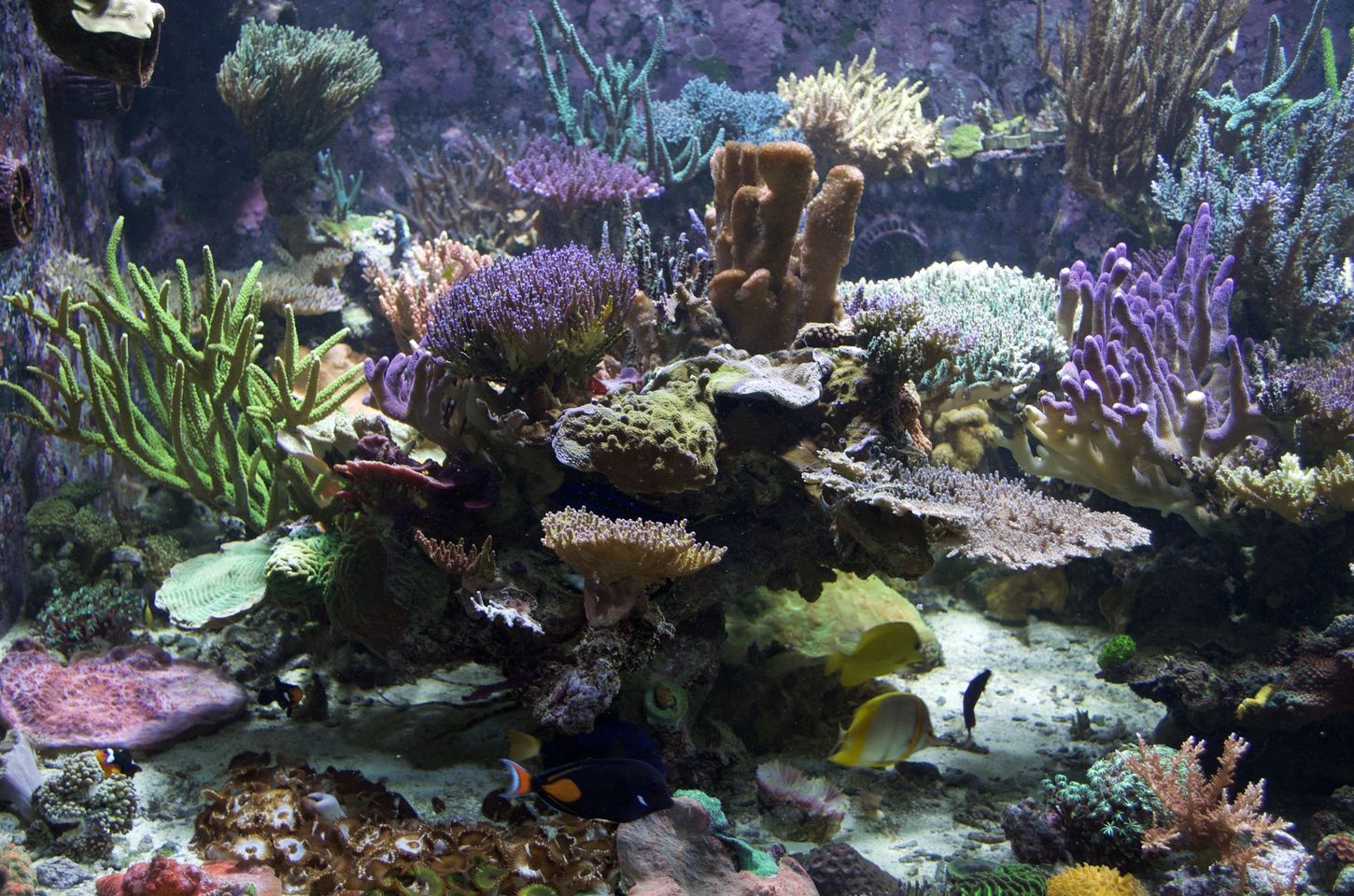Over the years a number of different aspects of reefkeeping have either become a hot topic or have been forgotten by the hobby. When I was starting out one of the parameters that was focused on was pH, which stands for the potential of hydrogen.
This was probably due to the fact, that unlike the freshwater side of the hobby, where most of us had come from, the pH in our systems needed to be above 7, and alkaline, rather than below 7 and acidic. This was all new to us and at first, we were not really sure how to achieve this. Fortunately, it was a lot easier to achieve in a saltwater system than we thought.
Before explaining the nuances of pH, and its impact in a reef tank, the definition of pH and what it means needs to be defined. Simply put, pH is a figure expressing the alkalinity or acidity of a solution on a logarithmic scale. A pH of 7 is neutral, while a pH above this is alkaline, and below this is acidic. More specifically, pH measures the concentration of free hydrogen ions in a solution.
Since the scale is logarithmic, a pH of 8 has ten times less free hydrogen ions than a pH of 7 and a pH of 6 has ten times more. The pH of the ocean is approximately 8.1 and the optimal range in reefs tanks is thought to be approximately from 7.8-8.4 when alkalinity is between 7. 0 and 9.0.
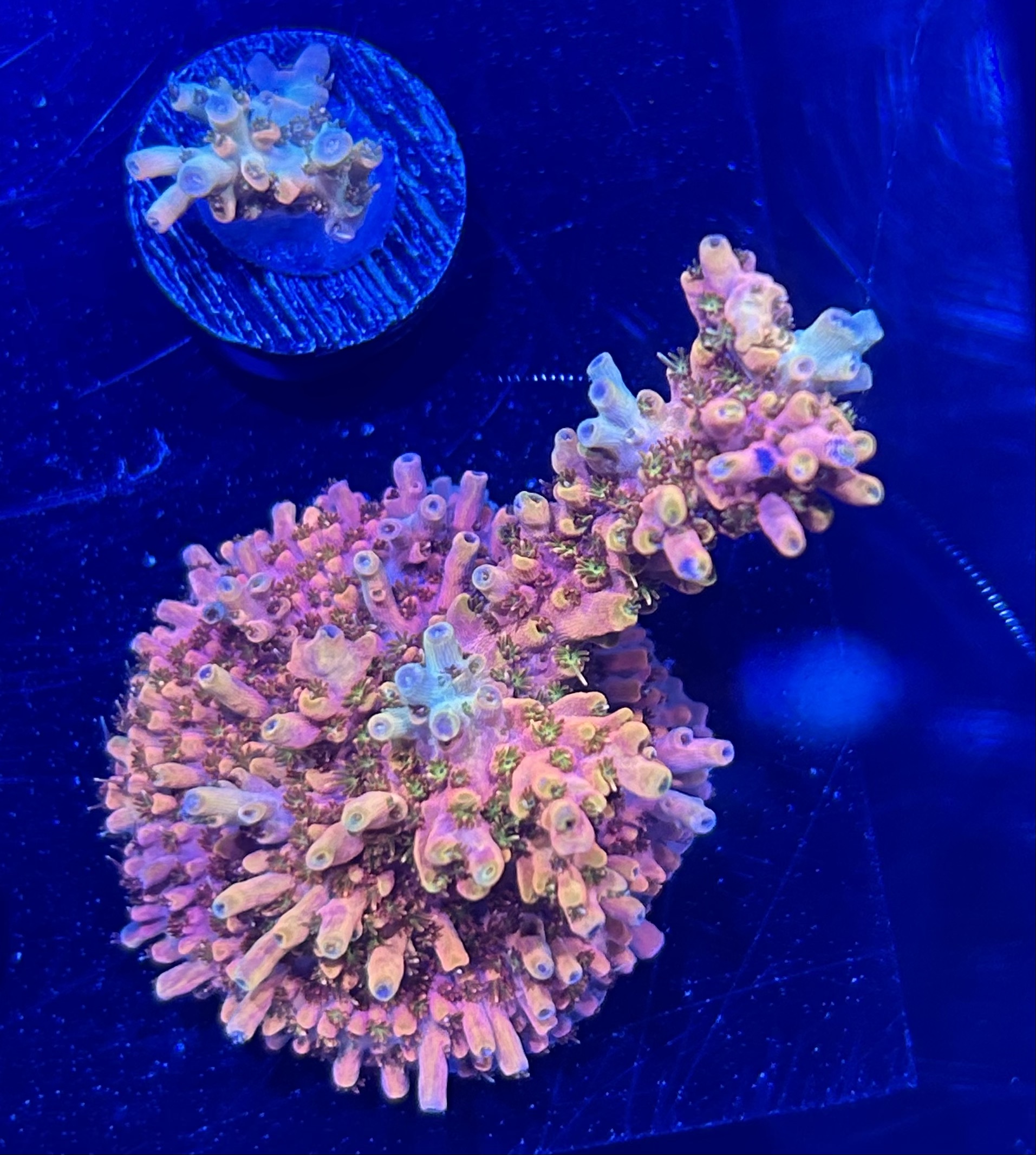
Why is pH important in a reef tank?
The reason it is one of the most important parameters in a reef tank is because corals grow by expanding their skeletons. Their skeleton is made up primarily of calcium carbonate which is obtained by the coral pulling carbon and calcium from the water. During this process it pulls both carbonate and bicarbonate from the water, there is more bicarbonate in the water than carbonate. The difference between them is that bicarbonate contains an extra hydrogen atom.
With lower pH, there are more hydrogen atoms in the water, so it is more difficult for the coral to rid the bicarbonate of the extra hydrogen and move it away from the colony before it can combine it with the calcium. If the pH is too low, the coral may be stuck with the hydrogen atom which can either slow its growth or damage the coral.
At a higher pH, it is easier for the coral to shed this extra hydrogen atom, and hence why when other conditions are optimal faster growth can occur. This may sound complex, but all that really needs to be understood is that higher pH means less extra hydrogen and potentially faster growth.
In addition to understanding pH, it is also necessary to understand that measuring it in a tank is not necessarily the easiest thing to do either. While there are countless means for doing so including test kits, patches, and various electronic devices, in my experience these all need to be calibrated before their use. Otherwise from what I have seen their reliability and accuracy are all questionable.
I currently have no fewer than 5 means for measuring pH, including two of the exact same pocket pH probes. Unfortunately, even when they are all calibrated and run immediately the pH values always vary, even in the exact same pocket probes. Seeing this also makes me question the calibration solutions. For this reason, I always run multiple probes when testing for pH and have learned to be satisfied when it is in a range rather than an exact number. For this reason, it is important not to chase numbers, as with pH, this, in my opinion, is a fool’s errand.
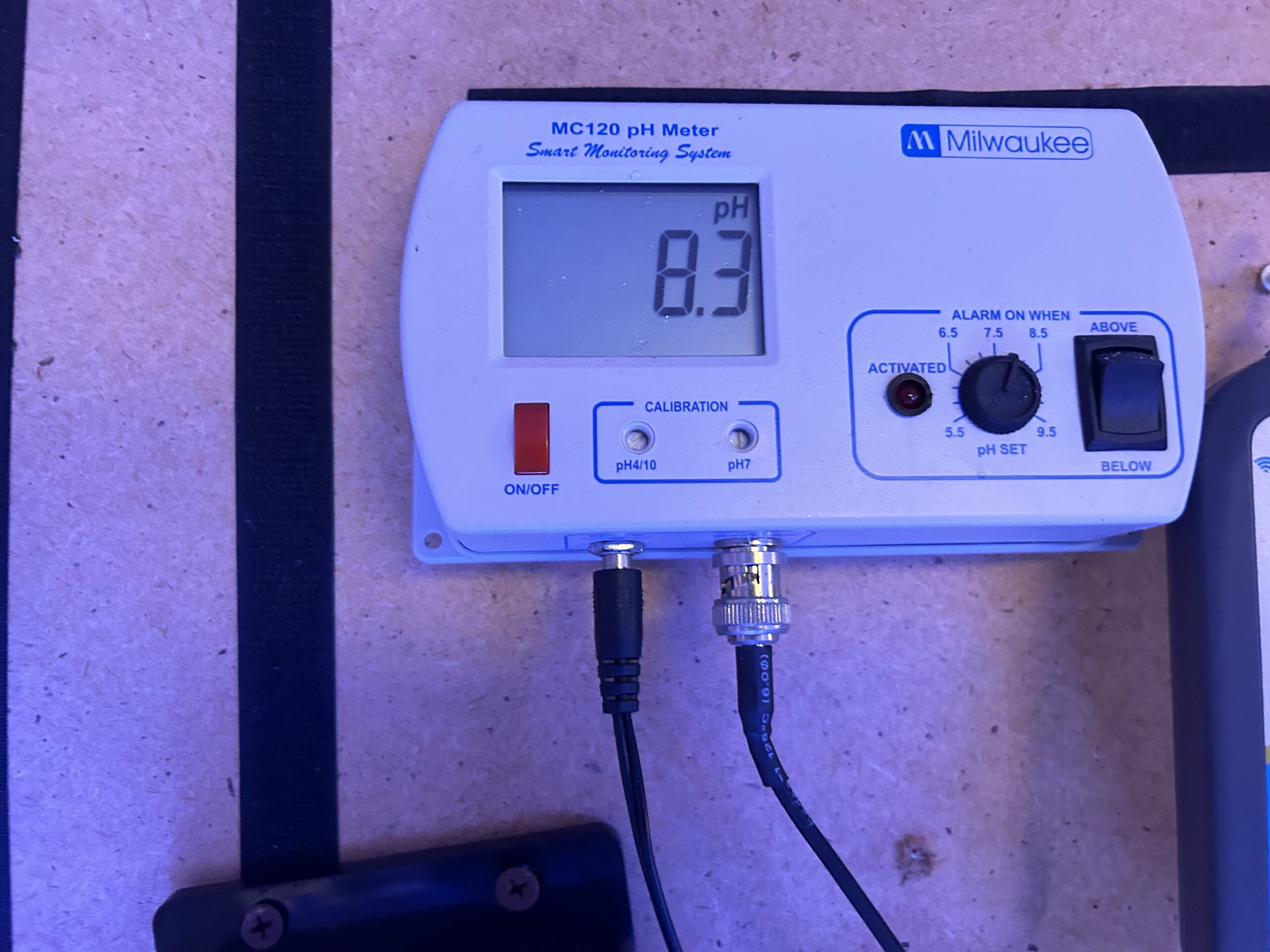
Grow corals faster
Over the past couple of years pH has gained renewed interest due to some studies showing that at higher pH, above 8.1, corals grow faster than when kept in the lower pH range 7.7-7.8. It should be noted that corals still grow in this lower range, just that they may grow faster in the higher range. For this reason, increasing or possibly just stabilizing the pH at a higher range in our systems has become the goal for many hobbyists.
It should be noted, that in addition to higher pH other parameters such as increased lighting, higher nutrients, or better coral nutrition may also increase the growth rates in corals. While increased lighting has been known to increase the growth of corals for decades, increasing pH and better nutrition to increase coral growth rates are relatively new findings that have only been discussed in depth for the past two or three years.
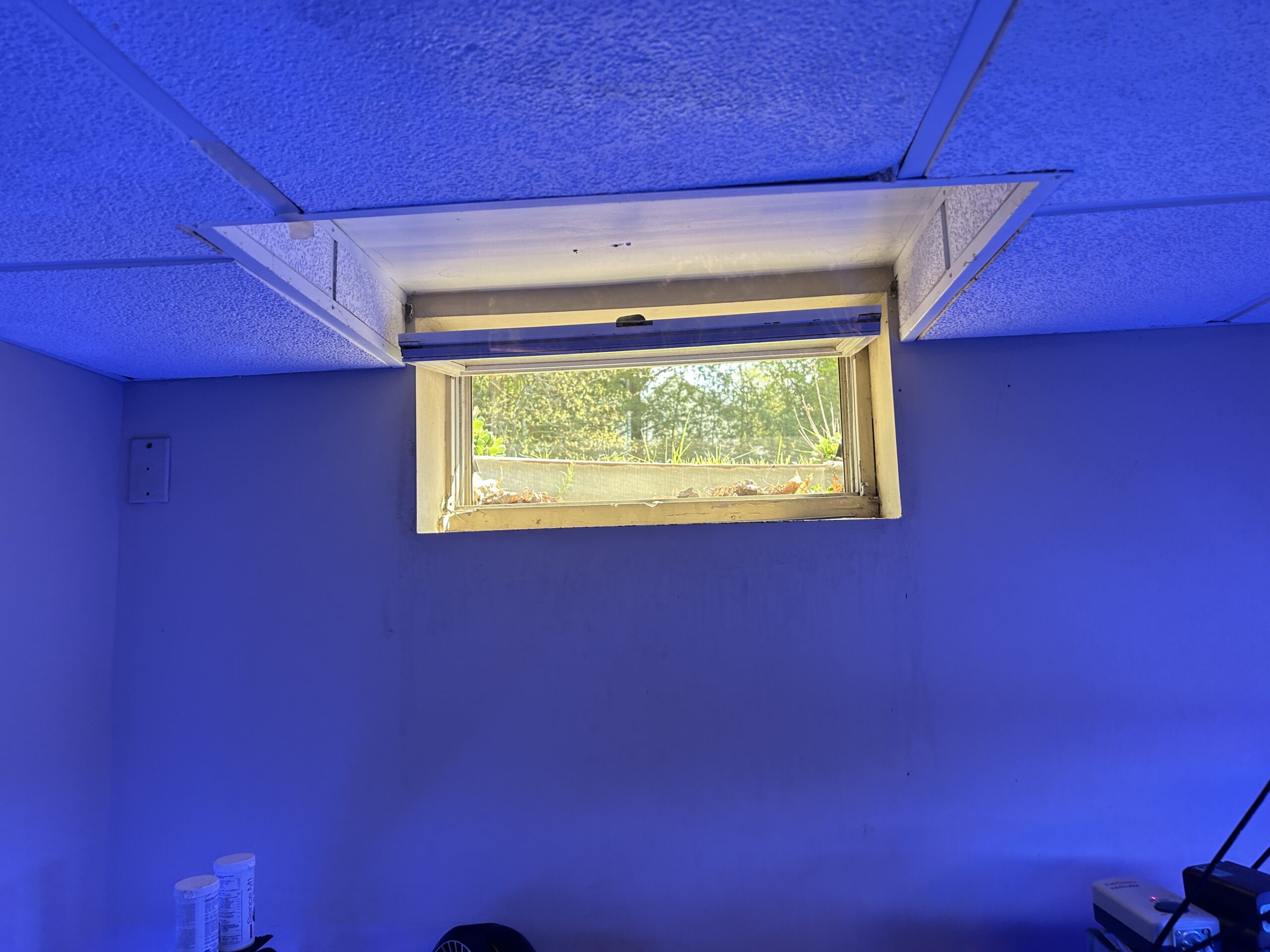
I have been trying to improve the pH in my tanks for much of this time with mixed success and I have tried to do so without adding a bunch of chemicals, which is another way to do so. My attempts included reducing the CO2 levels in the room where my tanks are located, using CO2 scrubbers on the air going into the protein skimmers, switching from a calcium reactor to a two-part dosing system, and increasing the movement at the surface in my tanks with more flow.
While these methods increased the pH in my tanks slightly (from an average of 7.9 to 8.1) these new levels may not have been high enough in my opinion to increase the growth rate of my corals significantly.
After trying these methods as well as speaking with fellow hobbyist friends, I decided to go back to old-school reefing and started dosing kalkwasser. In the early days of keeping sps corals this was the go-to supplement for keeping calcium and alkalinity levels up in our tanks. Kalkwasser is simply calcium hydroxide dissolved in a water solution, at the rate of approximately one tablespoon of dry powder to a gallon of water.
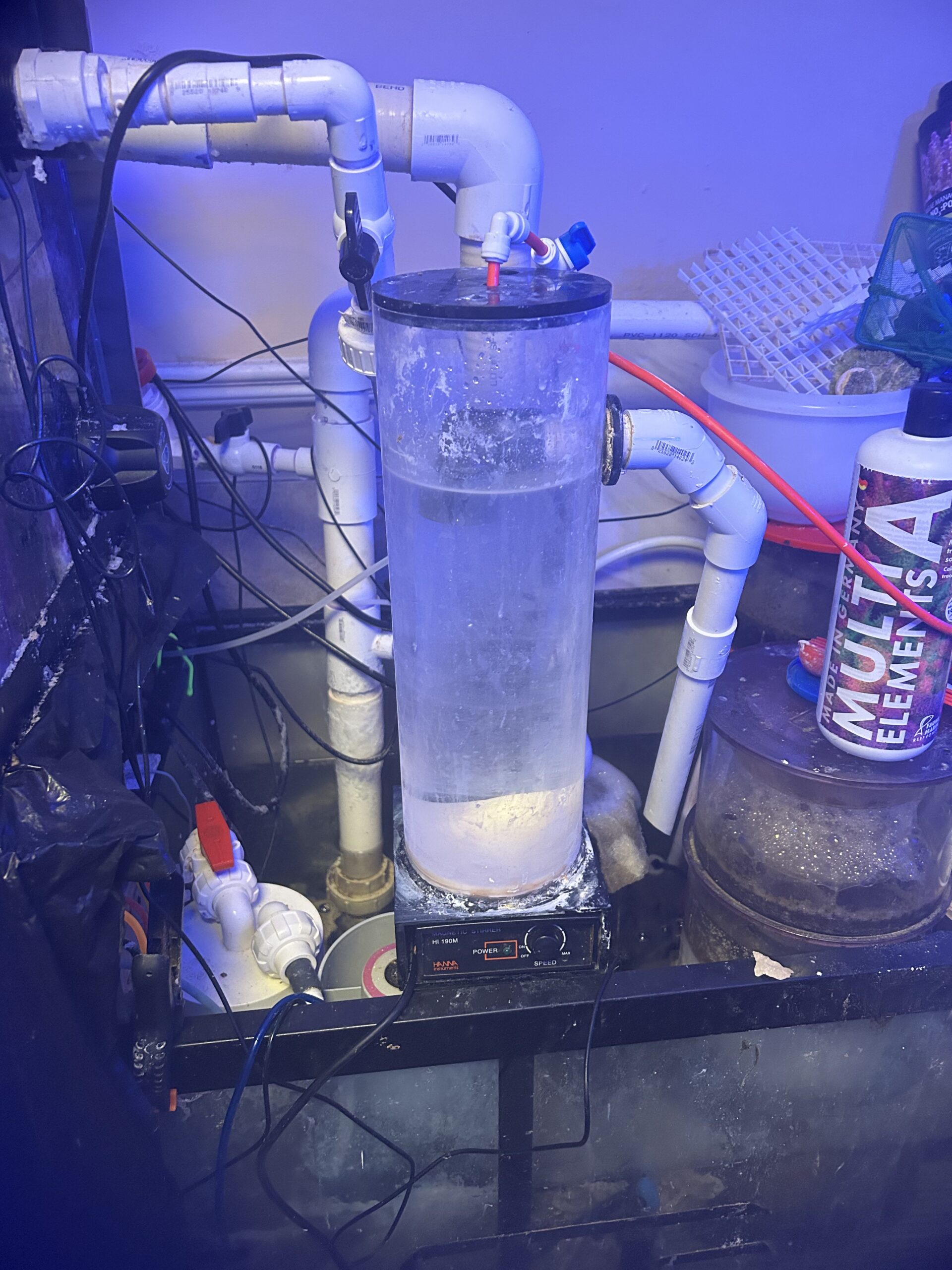
Using kalkwasser as a supplement was originally introduced by Alf Nilsen in his articles in FAMA magazine in the late 1980’s/early 1990’s. The use of kalkwasser has fallen out of favor with most hobbyists as even though the solution itself is easy to mix up, it is very caustic and has a very high pH. But it was the method of choice for supplementation during the early years of the hobby and I used it for over a dozen years with no real problems during that time. But there are some problems with its use that should be noted.
First, it primarily only supplements calcium, and does not do much to add to alkalinity. This was the main reason why many hobbyists switched to using either calcium reactors or two-part additions once the importance of maintaining stable alkalinity was understood. Second, it was difficult to get the dosing right, as it was most often used exclusively as the makeup water to replenish the water that had evaporated. So unless the amount of kalkwasser needed matched perfectly with how much water evaporated daily, things could fall out of balance.
Kalkwasser can also help to precipitate other compounds out of the water like phosphate, which in the early days of the hobby we tried to get to zero, but now we understand its importance. Therefore adding kalkwasser can lower the phosphate level too much. And it also may precipitate out other crucial elements like Fluoride and Bromide.
In my tank, it is used to supplement the two-part dosing, so these shortcomings are somewhat negated. In my own sps tank, kalkwasser has replaced using plain RO/DI water for the last nine months as the replacement for all evaporated water, which is approximately 4-5 gallons a day. Over time the pH has gradually crept up from a low of 7.8 at night to a low of 8.0 at night and from a high of 8.1 during the day to a high of 8.4.
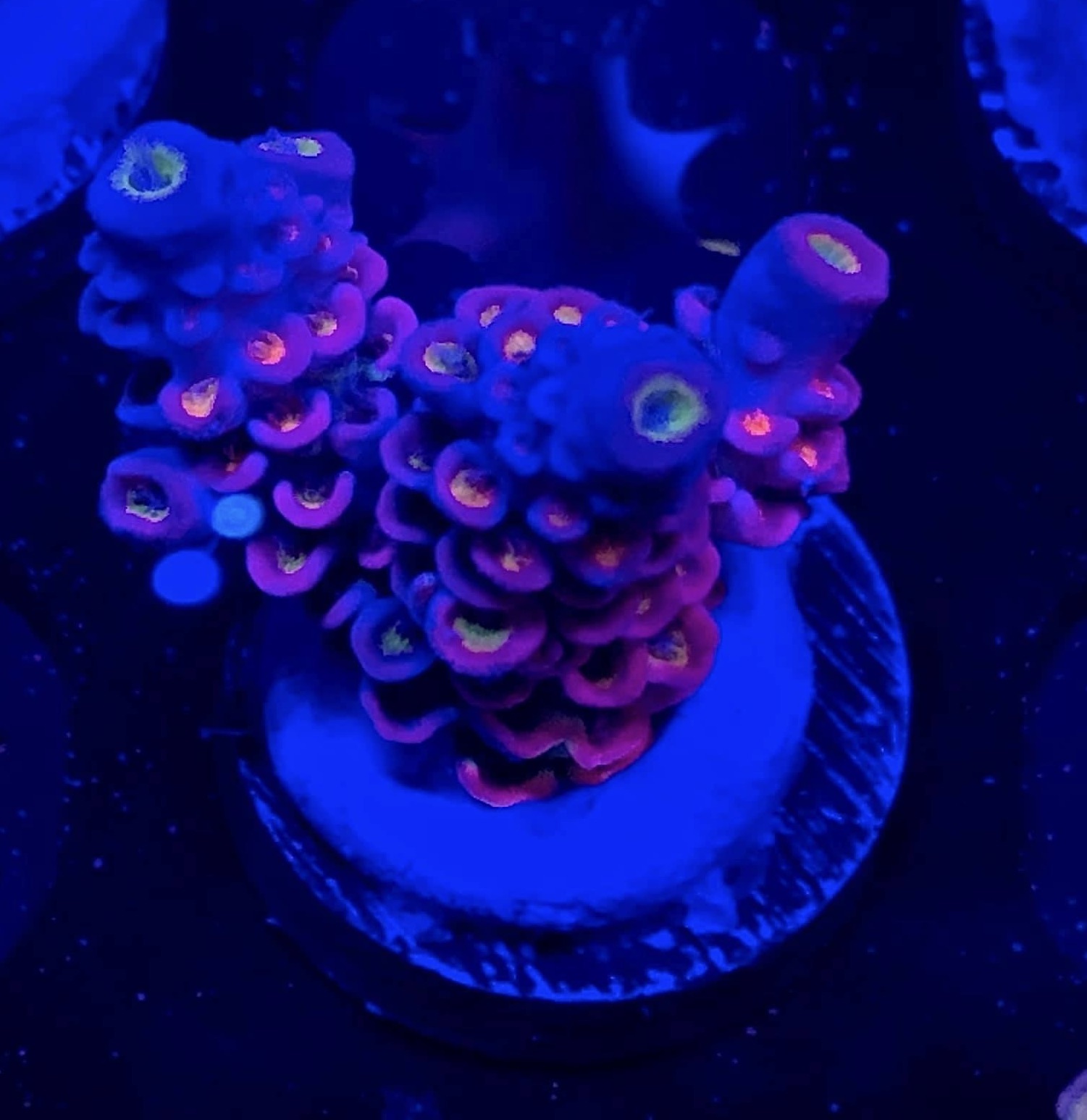
This higher range is exactly what I was hoping for. Initially, during the first two months, the kalkwasser system was set up to only add kalkwasser at night, with the belief being that this would reduce the drop in pH at night enough that the pH would go high enough during the day that it would not need to be added during the day. Unfortunately, this only increased the pH by .1. Only by adding it in small amounts 100-200ml, constantly throughout the day in small amounts, no more than 200ml at a time, has the pH now gotten to the desired levels.
Since getting to and maintaining these higher pH levels the growth in corals has increased significantly. In addition to my own observations, the supplementation of buffer, calcium, magnesium, and strontium have all also required increases in their dosing, indicating increased usage by the corals. It should be noted that initially calcium supplementation needed to be reduced, due to the kalkwasser additions, but after a couple of months it has required a gradual increase beyond what it was before kalkwasser was added.
For alkalinity usage the increase was approximately 50% and for calcium and the others approximately 30%. It should be noted that before adding kalkwasser to your regime, you should read up on its use beyond what I have written here, as there can be issues when it is not mixed or stored properly. As mentioned above, it can be caustic not only to corals and fish but to humans as well, and since it precipitates out phosphate and some trace elements when it is being used, water testing should be done more frequently including ICP testing.
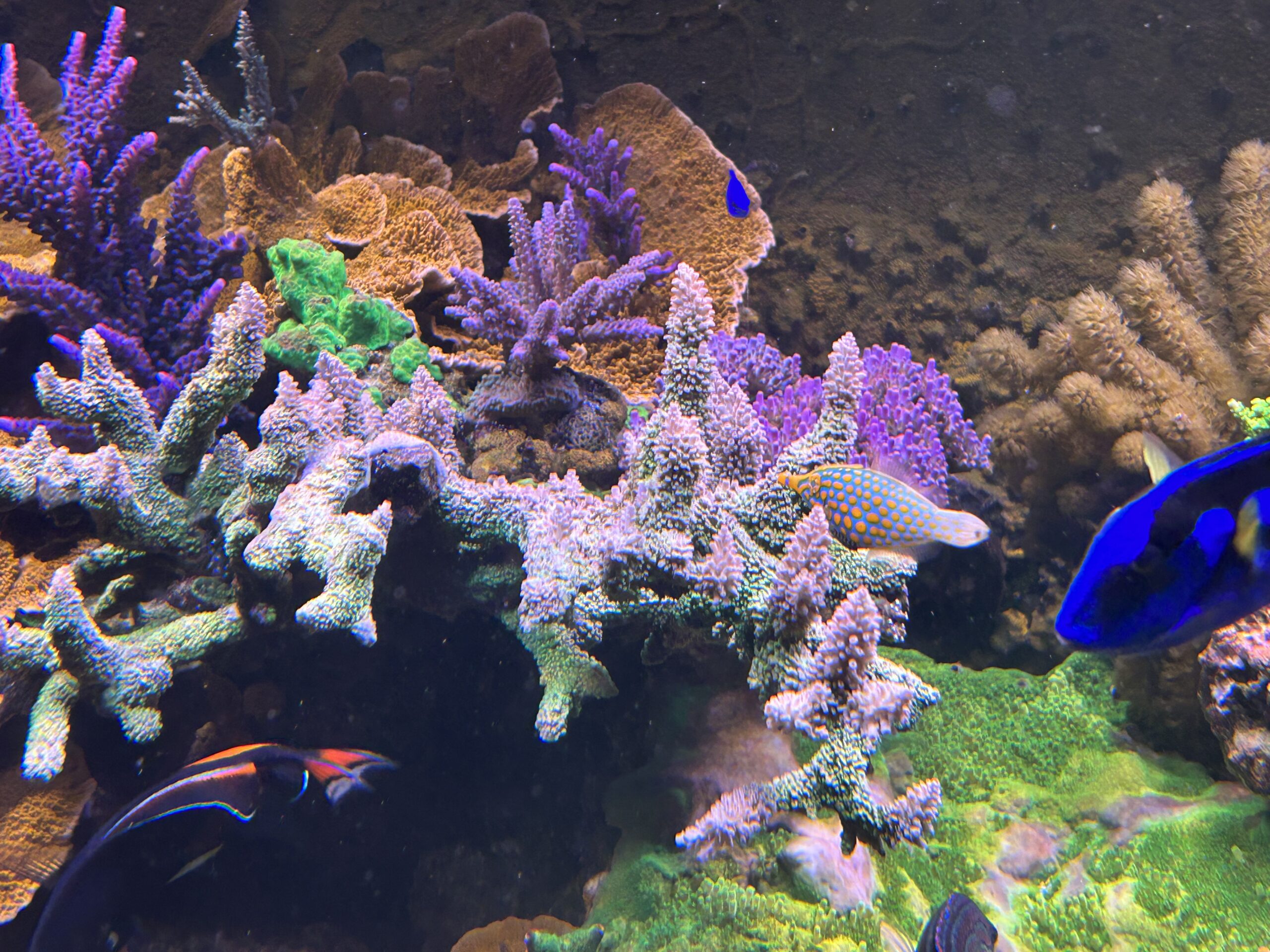
In my own tanks, using kalkwasser not only reduced phosphate so much that it needed to be supplemented, but it also greatly reduced the Fluoride level, so this now needs daily supplementation as well.
Several other trace elements also required increased additions, but I am not sure if this was due to the kalkwasser addition or from the corals simply taking them up faster. While keeping a higher pH may be beneficial, as with most parameters, it is not a good idea to chase numbers. More to the point it is not a good idea to try and increase the pH rapidly.
It is more beneficial to keep things stable including pH and only gradually try to increase it. With prolonged stable higher pH more rapid growth of corals and healthier corals should result. And while pH is an important parameter, it is only one of many that are involved in the web of having a healthy reef tank.


